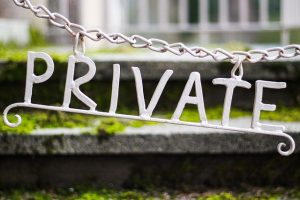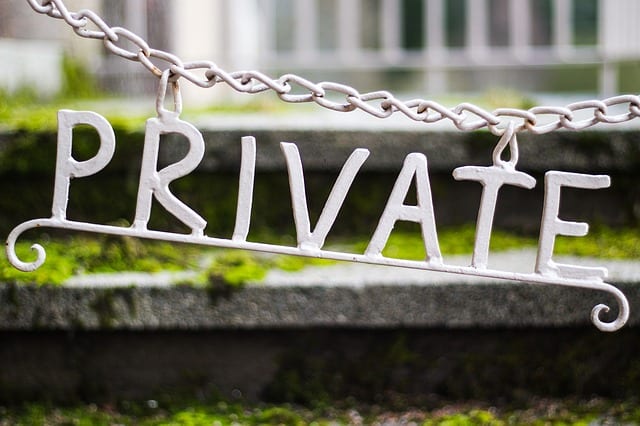
Over the next two days we’ll look at two of the fundamental issues of starting to generate a learning (or any form of digital) footprint – what others can see about you.
Today, we’ll be looking at those aspects you may prefer to keep to yourself, tomorrow, it’ll be what you actively want to promote.
Over the last few days, you have started to look at the tools that you use online, and we’re aware that many of them leave a trail of content. You’ll probably also have read assorted news items about content that others would rather people haven’t found online.
The term Digital footprint is often used, and, though we are focusing on learning footprints, for most people, the personal and work/learning are intricately linked, unless you are assiduous in your use of a pseudonym in one or the other case. There are two main aspects to a digital footprint – the passive (data that exists about us) and the active (data we create about ourselves).
As we can do very little about the former, it’s the latter we’ll be looking at primarily.
You have probably already done this many times, but just in case you haven’t, try searching for yourself. One thing that you may find useful, is to try to see what others see, as your own browsing history can influence current search results.
- Try using the incognito/private mode on your browser.
- Try using a browser you don’t normally use, for example, Bing or DuckDuckGo
How much did you have to refine your search to find stuff that’s about you, rather than someone with the same name? About you as a learner, rather than other aspects of your life? Could you share the search (or a screenshot thereof?) If you ask someone else to search for you, do they find the same as you?
Do you use a pseudonym in some or all aspects of your online life, if you do, does searching both your name and the pseudonym find anything that would link both (do you want them linked?).
You may well have heard of the “right to be forgotten” – this allows you to request the removal of content from search engines, though not from the site that’s hosting the content (if it’s a site that you can’t edit).
Some people will go to the extent of trying to hide all online activity, though many would argue there are potentially more issues in being totally hidden (e.g. why would someone want to hide everything?)
Another approach that some use is to use anonymity,and, perhaps predictably a number of tools have grown up to support anonymity- but, there has been a lot of negative press about the potential issues of cyberbullying via anonymous channels. We do, however, mark anonymously – so should we (and students) be able to learn anonymously?
As we’ve already said, today, we’re thinking about content that you may not want others to see, tomorrow, we’ll look at how to engage with others as part of your learning. As food for thought, how happy are you to share online aspects of learning through failure (ACM article, may require login if not on campus)
While there is a lot of research into privacy of online content generally, there are rather fewer articles on privacy of learners online. Here is selection of those you may find interesting.
- David John Lemay, Tenzin Doleck, Paul Bazelais, “Passion and concern for privacy” as factors affecting snapchat use: A situated perspective on technology acceptance, In Computers in Human Behavior, Volume 75, 2017, Pages 264-271, ISSN 0747-5632, https://doi.org/10.1016/j.chb.2017.05.022.
- Karen Kear, Frances Chetwynd & Helen Jefferis (2014) Social presence in online learning communities: the role of personal profiles, Research in Learning Technology, 22:1,19710, DOI: 10.3402/rlt.v22.19710
(looks at the different ways students with / without profile information behave in a learning community) - John Suler. “The online disinhibition effect” CyberPsychology & Behavior. July 2004, 7(3): 321-326. https://doi.org/10.1089/1094931041291295 (though dated, it’s a good overview, one that has been used many times since)
Future learners.
- Parenting for a Digital Future: A blog from Sonia Livingstone’s team at LSE, which covers, among other aspects, children and online privacy
Siân Bayne, from Edinburgh University, gave a presentation at alt-c about YikYak – a tool that encouraged anonymity, and how the students there used it, in a primarily positive way.


